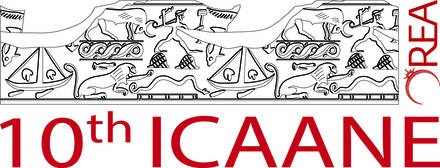
VIENNA 2016 STATEMENT ON THREATS TO CULTURAL HERITAGE BY THE 10TH INTERNATIONAL CONFERENCE ON THE ARCHAEOLOGY OF THE ANCIENT NEAR EAST
ASOR’s friends and colleagues on the steering committee of the 10th ICAANE (International Conference on the Archaeology of the Ancient Near East) Conference that just took place in Vienna last week have asked ASOR to share “The Vienna Statement 2016” with our members. It is a “Statement About the Threat to Cultural Heritage in the Near East and North Africa.” ASOR has a long-standing commitment to safeguarding cultural heritage, and we are pleased that past ASOR President Timothy Harrison presented the plenary address on international cultural heritage efforts at the conference and that the ASOR Cultural Heritage Initiatives team also gave a presentation in a workshop last Thursday.
The following is the text of “The Vienna Statement 2016”:
Statement about the Threat to Cultural Heritage in the
Near East and North Africa
10th International Conference on the Archaeology of the Ancient Near East
(10th ICAANE)
On April 27, 2016 the special section ‘Cultural Heritage under Threat: Challenges and Solutions’ took place as part of the 10th ICAANE in Vienna. The Vienna Organising Committee and Scientific Board of the 10th ICAANE and participants in this event affirm the following:
1. The Near East and North Africa are among the richest cultural landscapes in the world, with remains from almost all periods of human history. Their importance is underlined by numerous inscriptions in the UNESCO World Heritage list.
2. The cultural property of these regions is in great danger. Destruction due to conflict and warfare, looting and illegal excavation, combined with the illicit trade in antiquities, has already led to the partial or complete loss of important historic monuments and objects.
3. The continuing and significant loss of cultural heritage through accidental or deliberate action poses a grave threat to the cultural identity and economic potential of these regions. Furthermore, the destruction of cultural archives constitutes an irreplaceable loss to humanity as a whole.
4. The situation requires intense international cooperation at all levels. Regional authorities, in particular antiquities bodies, scientific institutions, UNESCO, police, and border control, must cooperate over the long term. Such cooperation has been promoted by numerous international meetings, and these must continue to occur regularly.
5. Representatives and staff of the regional and local authorities, in particular antiquities bodies, in the affected regions should be supported in preserving the cultural property in their care by both national and international institutions, organizations, and committees (for example, through guest residencies for training and courses).
6. At a scientific level, dialogue with national authorities (such as departments of antiquities) must be initiated or continued with respect to the exchange or transfer of research data on archaeological sites and historical monuments generated in the affected countries by international research institutions.
7. Campaigns to raise awareness in printed, broadcast and social media are the basis for increasing public awareness of the problem of endangered cultural property. The extensive efforts made in recent years must continue at an international level.
8. Criminal investigations into the illegal trade in antiquities must be facilitated, and supported by professional expertise.
9. There is a clear need for international, UNESCO-supported conferences where expert analysts, in collaboration with national authorities, can develop proposals for consolidation, mitigation and preservation projects as a response to damage to and destruction of cultural property.
10. Advanced training abroad in the areas of consolidation, preservation, and reconstruction should be facilitated for young scholars from the affected regions in the following disciplines: archaeology, architecture, heritage conservation, and tourism management.
11. Study-abroad opportunities for students of archaeology, architecture, heritage conservation, and tourism management should also be made possible and facilitated.
